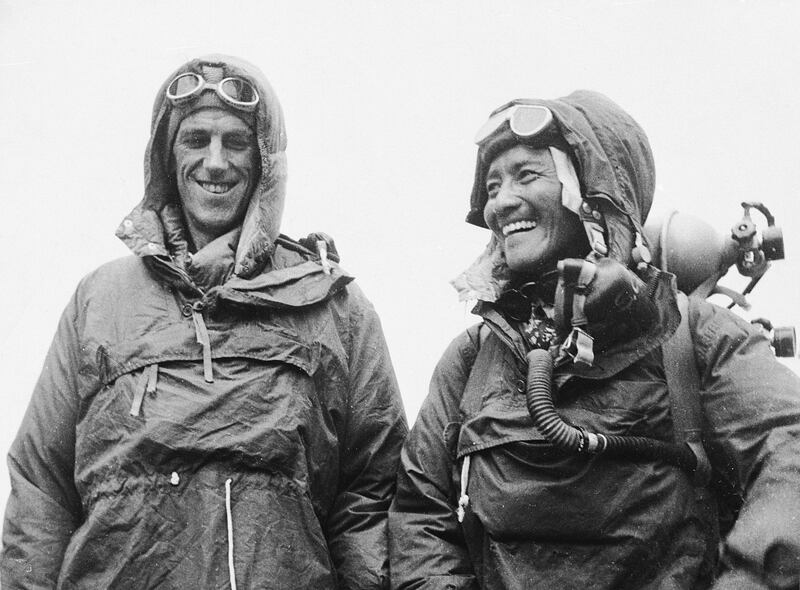Ramadan 2020, in the Islamic year 1441, will always be remembered for one thing: Covid-19. But momentous events have always occurred during the holy month down the years.
Starting in 1950, we look back over the last 70 years and the next four weeks at some of the headlines from previous Ramadans, with an emphasis on the positive, of news that shows the strength and creativity of the human spirit.
1950 (1369) June 17 to July 16
Nearly 70,000 lives are saved every year by kidney transplants, according to the World Health Organisation. Seventy years ago, though, organ failure could be a death sentence, with dialysis only just being developed.
On June 17, 1950, the first day of Ramadan 1369, Dr Richard Lawler performed the world’s first successful transplant at the Little Company of Mary Hospital in the Chicago suburb of Evergreen Park.
The recipient was Ruth Tucker, a 49 year old woman with a history of kidney disease that had already taken the lives of her mother and sister. In a 45 minute operation, she received the kidney of an unidentified woman who had died an hour earlier of liver disease.
The new kidney was eventually rejected by Tucker’s body, 10 months later, but the borrowed time allowed her remaining kidney to regain normal function. She died in 1955 from heart failure unrelated to her kidney problems.
Transplant operations remained risky and with a high risk of failure until the development of immunosuppressant drugs and tissue typing, but are now routine.
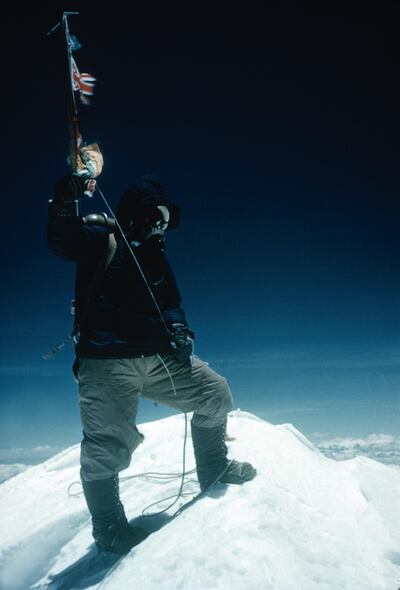
1953 (1372) May 14 to June 13
Everest, the world's tallest mountain, had long been regarded as the ultimate climbing challenge. By May 1953, it had already taken the lives of 13 people of handful who had attempted it.
On May 29, 1953, also the 16th day of Ramadan, the 8,848 metre summit was finally conquered by Sir Edmund Hillary and Tensing Norgay, a Nepali-Indian Sherpa.
The news reached London on the morning of June 1, to be released for the coronation of Queen Elizabeth, with one of her first acts to give a knighthood to Hillary and the George Medal, one of the highest civilian medals for courage to Norgay.
Norgay died in 1971, and Hillary in 2008. More than 4,000 people have since climbed Everest, including Ali Nasuh Mahruki, from Turkey, the first Muslim in 1995, and an eight man Emirati armed services team in 2016.
![B81FFF Jim Henson, The Muppets (Kermit the Frog, Yorick, Sam, Harry - on the set "Sam and Friends" Year: 1955 - [TV-Series 1955-1961] Writing credits Jim Henson. Image shot 1955. Exact date unknown.](https://thenational-the-national-prod.cdn.arcpublishing.com/resizer/v2/MZRFMGNGKW4RQ6URWH675F6UXE.jpg?smart=true&auth=a17c733cf40ab324ad0eb7af2fd60ad26b319958d002155da89660ef12fdceb3&width=400&height=320)
1955 (1374) April 24 to May 25
He’s an international superstar, and with the spring in his step, few would guess that Kermit the Frog will celebrate his 65th birthday this Ramadan.
The loveable green puppet was “born” on May 9 in the middle of the holy month in 1955.
The occasion was new TV show, Sam and Friends created by Jim Henson for WRC-TV in Washington DC. The debut of Kermit was in black and white, with a suspicion that he may at first have been a lizard.
According to the Museum of American History, early Kermit did not have his familiar collar and had rounded feet. Henson created him from an old green coat discarded by his mother, and two table tennis balls.
Henson had conceived the character a year earlier, but it was not until 1976 that Kermit became a major star, with the launch of the Muppet Show.
The museum has the original Kermit as part of a donation of characters created by Henson, who died in 1990. They include Yorick, a prototype for the Cookie Monster, and Pierre the Rat, who never quite made the big time. But that’s showbiz for you.
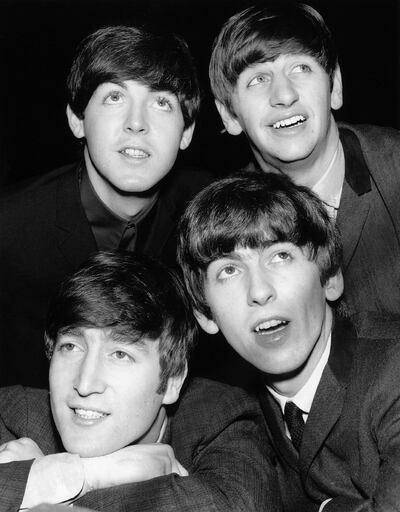
1963 (1382) January 23 to February 25
They were only in the studio a single day, but by the end of February 11, 1963 a pop masterpiece had been created.
The Beatles already had two hit singles in the UK when they prepared to make their debut album. Please, Please Me was recorded at the EMI Studios in London and produced by the George Martin.
The album was essentially a recording of the group’s live act, beginning at 10am and finishing 13 hours later, despite fears that John Lennon’s worsening cold would damage his voice.
A total of 14 tracks were laid down, each averaging barely two minutes. Martin’s budget was tight, and the entire session cost around £400 (Dh1,800).
With classics like Love Me Do, I Saw Her Standing There and the title track, Please, Please Me went straight to number one in the UK when it was released that May, and stayed there for an unprecedented 30 weeks.
"There can scarcely have been 585 more productive minutes in the history of recorded music,” the music historian Mark Lewisohn wrote in 1988.
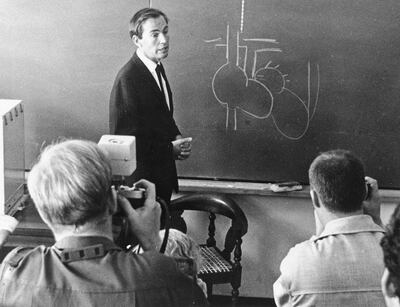
1967 (1387) December 3 to December 31
On December 3, 1967, the first day of Ramadan, the world learnt of an astonishing breakthrough in medicine – the world’s first heart transplant.
Working with a team of 30 and taking five hours, the South Africa surgeon Christiaan Barnard successfully transplanted a living human heart into Louis Washkansky, a 54 year old grocer with incurable heart disease.
The donor was a young woman who had been declared brain-dead after an accident the previous day.
As an untested procedure, the surgery carried enormous risk. Explaining why Washkansky had volunteered. Barnard said “For a dying man, it is not a difficult decision because he knows he is at the end. If a lion chases you to the bank of a river filled with crocodiles, you will leap into the water, convinced you have a chance to swim to the other side."
The patient lived for 18 days, recovering sufficiently to have conversations with his wife, but eventually succumbed to pneumonia, the result of taking immunosuppressive drugs.
Very few early heart transplant patients survived more than a few months, but improved techniques mean that today most can expect another 15 years of life and sometimes longer.
Barnard who retired in 1983, now a household name, died in September 2001 of an asthma attack.
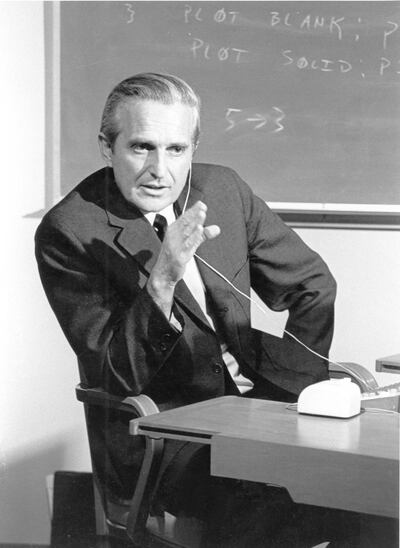
1968 (1388) November 21 to December 21
1968 was a rarity with Eid Al Fitr falling twice in the same year - first on January 1 and again on December 21.
It was on December 9, half way through Ramadan, that the world got its first glimpse of two things that would change life forever.
Now known as “The Mother of All Demos”, a computer conference in San Francisco saw inventor and engineer Douglas Engelbart unveil the first modern computer operating system. To demonstrate how it worked, he also navigated with the prototype of a mouse.
Englebart’s work used Hypertext to turn the computer from something that could simply make rapid and complex calculations to a tool that could communicate and retrieve information.
It is at the heart of the World Wide Web which uses Hypertext Markup Language (HTML) to link files, accessed, of course, with the click of a mouse.
At the time, the significance of Engelbart’s work was not properly appreciated even though it would later underpin Microsoft and Apple operating systems. Nearly 50 years later, we know better.
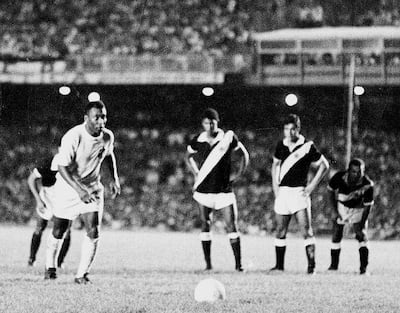
1969 (1389) November 11 to December 11
Four days into Ramadan 1969 saw the debut of one of the UAE’s most popular fast food choices - Wendy’s Old Fashioned Hamburgers.
The first burger was flipped in Columbus, Ohio on November 15. Founder Dave Thomas named the chain after his daughter Melinda, who as very young child could only say her name as Wendy.
Wendy’s signature square burgers are said to be designed so that the corners stick out of the edge of the bun, creating an impression of size.
The chain now has nearly 7,000 outlets all over the world, including the UAE.
Sports fans will also remember Ramadan 1969 for a penalty scored on November 19 at the famous Marcana Stadium.
It was the 1,000th goal in the remarkable career of the Brazilian footballer Edson Arantes do Nascimento – better known to the world as Pele.
